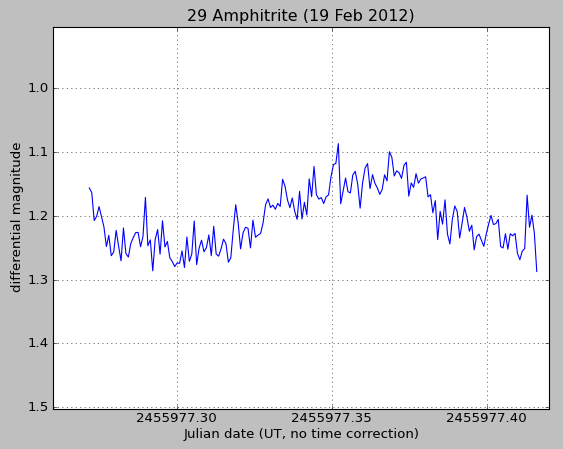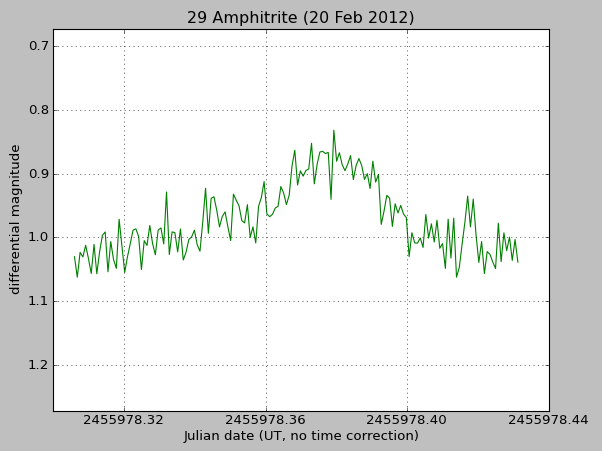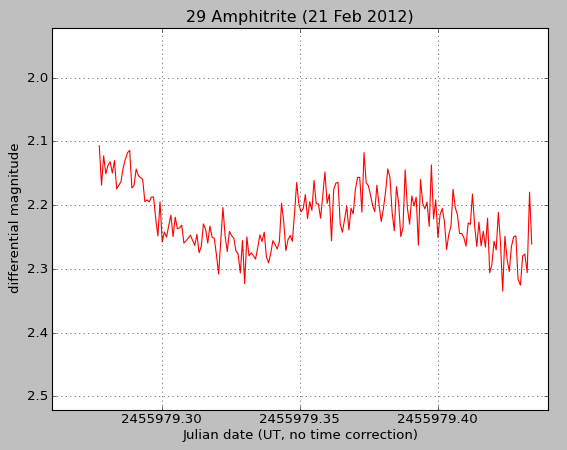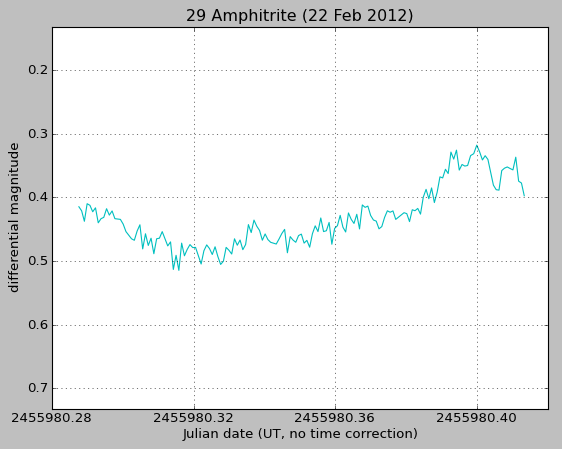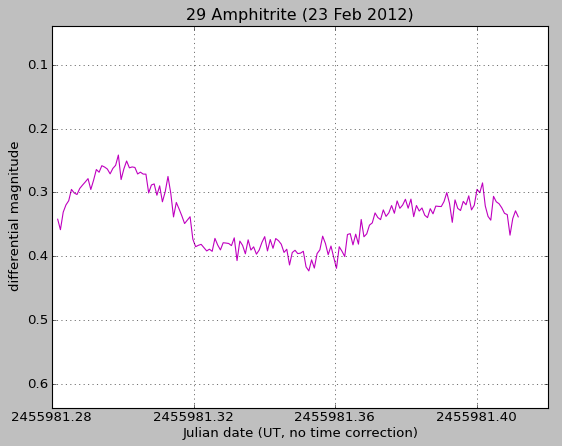(29) Amphitrite
From Wikipedia:
29 Amphitrite (233*212*193 km) is one of the largest S-type asteroids, probably third in diameter after Eunomia and Juno.
S-type asteroids are of a stony composition, hence the name. Approximately 17% of asteroids are of this type, making it the second most common after the C-type (carbonaceous type, 75% of asteroids).
Amphirite's orbit is less eccentric and inclined than those of its larger cousins; indeed, it is the most circular of any asteroid discovered up to that point. As a consequence, it never becomes as bright as Iris or Hebe, especially as it is much further from the Sun than those asteroids. It can reach magnitudes of around +8.6 at a favorable opposition, but usually is around the binocular limit of +9.5.
A satellite of the asteroid is suspected to exist, based on lightcurve data collected by Edward F. Tedesco.
- Tedesco, E. F. (March 1979). "Binary Asteroids: Evidence for Their Existence from Lightcurves". Science, New Series 203 (4383): 905–907.
- van Flandern, T. C.; Tedesco, E. F.; Binzel, R. P. (1979). "Satellites of asteroids". Asteroids. Tucson, AZ: University of Arizona Press. pp. 443–465.
Link to CdR-CdL website: Click here
Results
Observation Francois KUGEL with
Magnitude during the observations: 10.7 |
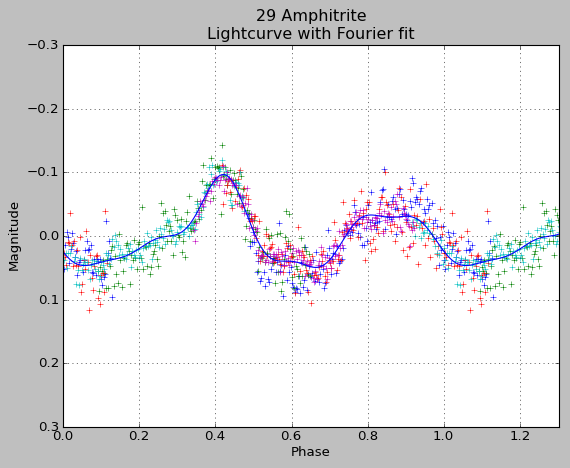
|
Searching the period
Search of best fit using 4 harmonics.Most likely period = 0.2245 days, this value corresponds to the official period.
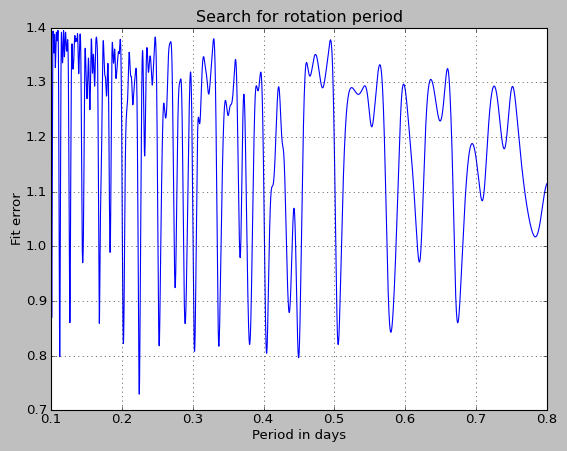
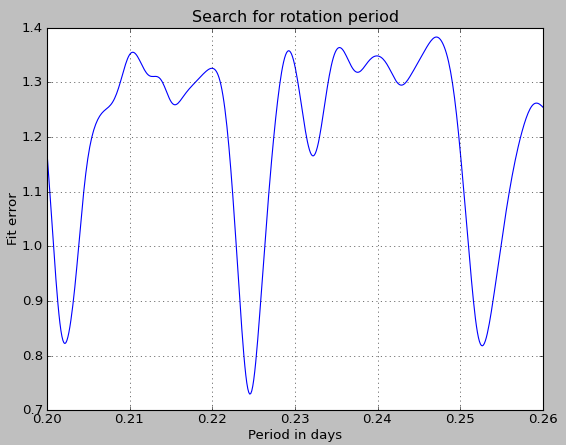
Measurements
